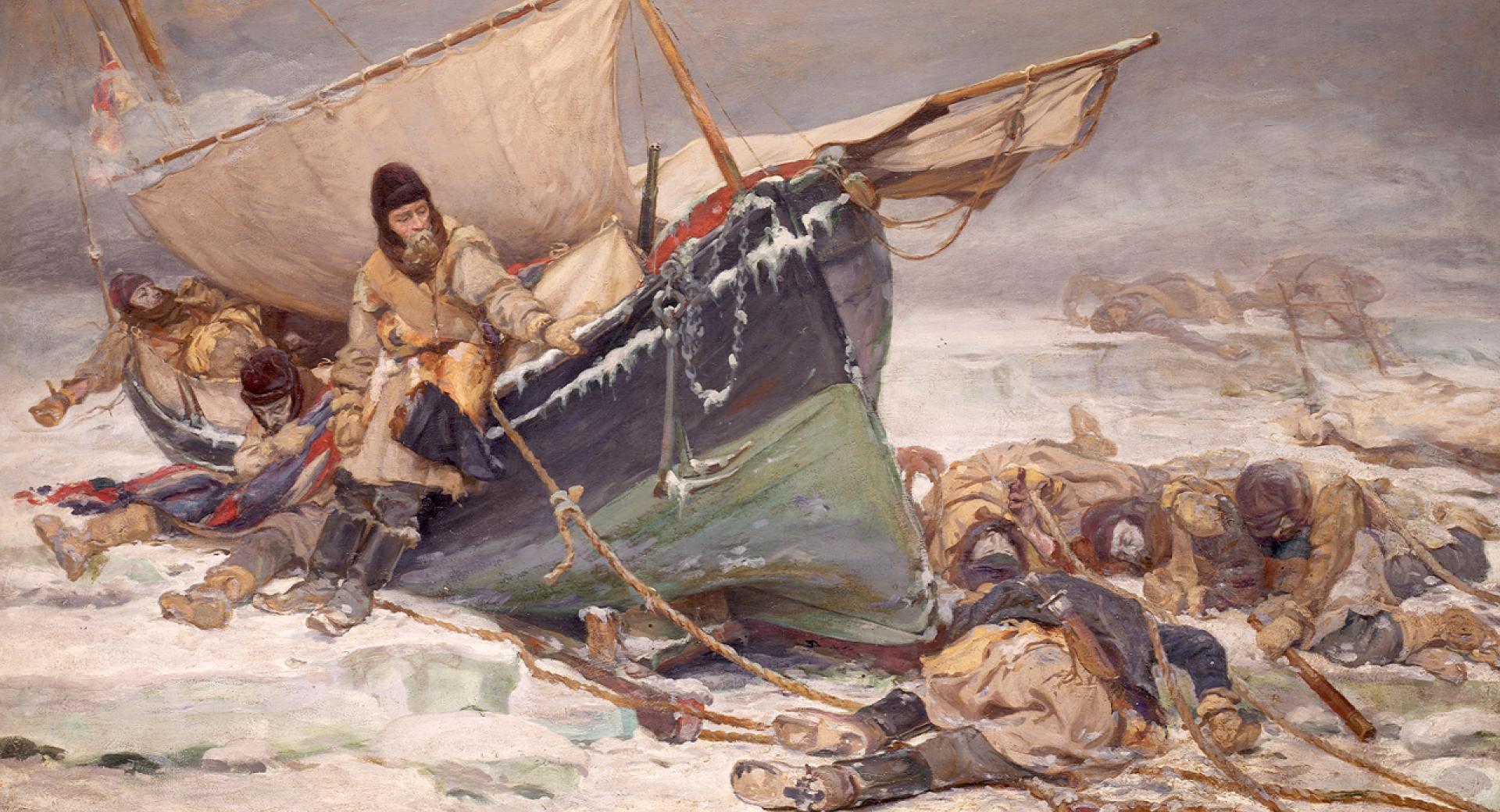Private Expeditions in the 19th Century Were Far More Successful
Earlier this week, the Canadian Parks Department unveiled the first inside pictures of the wreck of the HMS Terror – the second ship from the doomed Franklin expedition of 1845 that aimed to find the Northwest Passage. The discovery of the ship as well as that of its sister ship, the HMS Erebus, sparked renewed interest in the failed Franklin expedition to the point that AMC unveiled a television series about it, entitled the Terror.
In May 1845, under the command of John Franklin who had orders to find the Northwest Passage, the two ships set sail from Britain. They were last seen by Europeans in July of the same year, after which their fate was unknown. Their disappearance sparked public outcry in favor of sending further expeditions to discover what had happened. And for the following 150 years, many academics, explorers, and scientists tried to piece together what exactly took place. It was discovered that the crews had wintered at Beechey Island in 1845-46, where the ships soon became trapped in the ice. Crewmembers died gradually over a grueling three-year period. The last survivors died trying to trek back to known trading posts of the Hudson Bay Company.
Surprisingly, there is an opportunity for economic education in this story.
The numerous Arctic expeditions that took place during the period from 1818 to 1909 were a mixture of private and public ventures. This mixture allows us to compare outcomes between private and government-run enterprises (such as the Franklin expedition).
In fact, this comparison is quite useful in the analysis of scientific discoveries. Pure scientific research (like space exploration or CERN’s large hadron collider) is believed to yield public returns that exceed private returns. Thus, if left purely to the private sector, this kind of research would be neglected for lack of commercial benefits. The discovery of the Northwest Passage (which entailed mapping the Arctic Ssea) fits that definition. As such, there is no better setting to compare private and public enterprise.
In 2001, economist Jonathan Karpoff made just this comparison in an underappreciated article in the Journal of Political Economy (one of the leading journals of the economics profession). Karpoff assembled data on all the expeditions to the Arctic during the period from 1818 to 1909. The data included details about crew sizes, death rates, costs, research goals, number of ships, location, and the experience of team leaders. He also noted whether or not an expedition was government-funded.
Normally, with all that kind of data, economists will tend to rely on econometrics to arrive at estimations of the role of different variables on certain outcomes of interest. However, even before using these tools, Karpoff identified three important contrasts between publicly and privately funded expeditions.
First, he found that the majority of expeditions were privately funded: there were 57 privately funded expeditions and only 35 government-funded ones.
Second, he found that most of the tragedies – such as the Franklin expedition – were publicly funded.
And third, public expeditions were more expensive and ended in higher death rates among crewmembers (by a ratio of six to one). These are damning findings against the performance of publicly-funded enterprises. The use of econometric methods only piles it on. Karpoff finds that once you control for other factors (such as the research goals, the location and the experience of the captains), the private expeditions did yield better outcomes at a lower cost (financial and human).
What explains the differences between public and private expeditions? Karpoff argues that it is the role of incentives. Publicly-funded expeditions were more affected by political considerations than privately-funded ones. This affected the initial preparations for the expedition, most notably in the choice of captains who were sometimes chosen out of political motivation.
In contrast, private expeditions were often led by the men who initiated them. This is important as some economists – such as Nobel prize winner Eugene Fama – argue that managers in successful firms initiate and implement their plans of action. Karpoff has evidence to this effect: 77% of private expeditions were led by the men who initiated them as opposed to 26% for public expeditions.
More importantly, privately-funded expeditions – because they were answerable to private parties – had greater incentives to discover and correct errors as well as adapting better strategies. By way of example, Karpoff points out that leaders of private expeditions invested considerable efforts in consulting the work of previous explorers to learn. From these efforts, they discovered the value of adopting clothing, sheltering, and overland travel practices of the Inuits who populated the Canadian Arctic.
Karpoff’s findings are of relevance not only in terms of understanding the tragic fate of the HMS Terror and HMS Erebus, but also in terms of modern policy debates. It serves as a useful reminder of why, and how much, incentives matter – even when governments do things.











